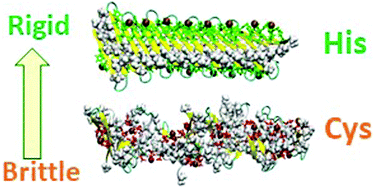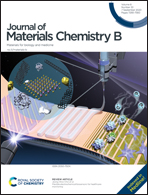Controlling the properties and self-assembly of helical nanofibrils by engineering zinc-binding β-hairpin peptides†
Abstract
This work illustrates a series of novel peptides that have the capability to bind Zn2+ ions and to produce fibrillar structures. The location and the type of the residues along the peptide sequence can determine the nature of the fibril. This work presents a proof-of-concept milestone for designing peptides with different properties to produce diverse materials.



 Please wait while we load your content...
Please wait while we load your content...